Are you interested in providing more opportunities for nature based play but not sure how to start? Well keep reading Empowered Ed's because today I am excited to share this article written by a close friend of mine (and exceptional early years educator!) - Linda Tandy.
Linda is a passionate family day care educator (registered with Inspired FDC) who has made a commitment to providing daily opportunities for nature based play to children of all ages and stages who find themselves visiting her family day care in Bega, Australia.
Today Linda invites us to think about 'toys' in a different way and also shares some simple ideas using natural materials that you can try in your own backyard or early years service. I do hope you enjoy reading through Linda's first guest post for The Empowered Educator!
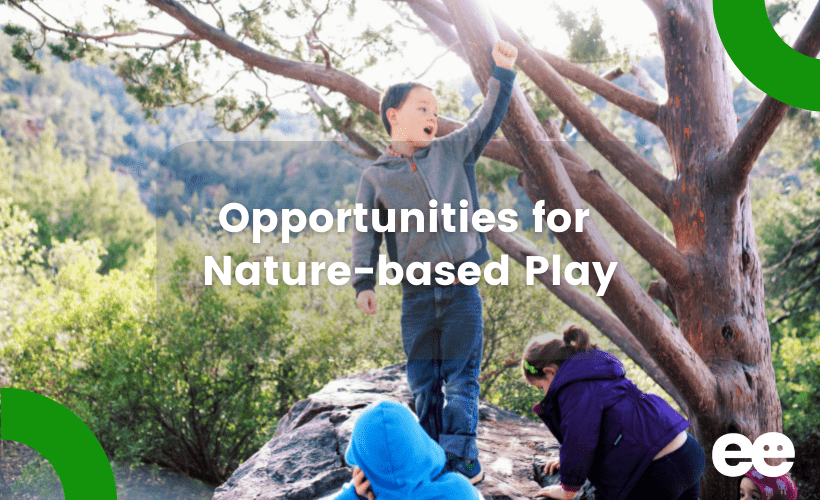
I’ve been doing nature-based play for around 5 years now and people often ask me ‘where are the toys?' when they visit us at River Kindy.
I tell them that nature provides the building blocks of what is needed and the children's imagination provides the rest.
Not sure about the simplicity of this concept? Let's take a quick look at how we have recently played with materials from nature in a number of different ways.
That's one of the best things about using open-ended materials – they provide opportunities for children to direct their own learning and develop a sense of ownership over their play…with very little input or direction from adults other than ensuring safe access to the materials and environments.
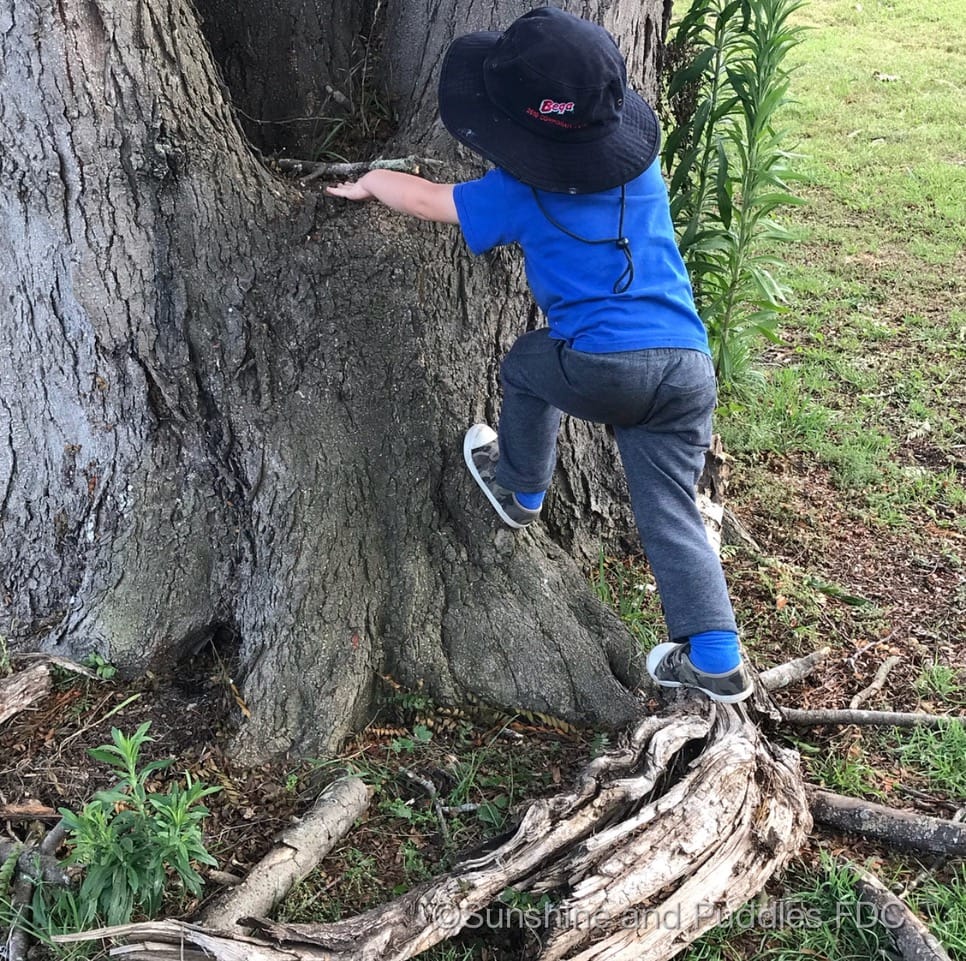
Photo Source – Sunshine & Puddles FDC
What do we do with grass? How can playing with it help us to learn?
- Grass can be used for lashings and tying things together.
- Creating dolls and other figures
- Decorating artworks
- Building homes for Fairies and other creatures born from active imaginations.
They learn about the capacity certain grasses have.
- Are they stiff, spiky?
- Do we need to use spiky grass or would thinner/softer/longer be better?
- Have we used this grass before? How?
- What is the potential of this newly found grass?
What do we do with Sticks? How can using them in play help us to learn?
Fallen branches and twigs become so many different things. The power of a stick is immeasurable.
Linda Tandy – Educator
- They might become a weapon to defeat the bad guys.
- The foundations of a mighty pirate ship.
- A tool for measuring depth and distance.
- The beginnings of a home or shelter.
We test many theories with sticks.
- Will a fallen stick bend like a stick straight off a tree?
- Can I use thick sticks like thin sticks?
- Will this branch hold my weight or the weight of a rock?
- Who lives/lived on this branch, in this tree?
- Will taking it, take away someones home?
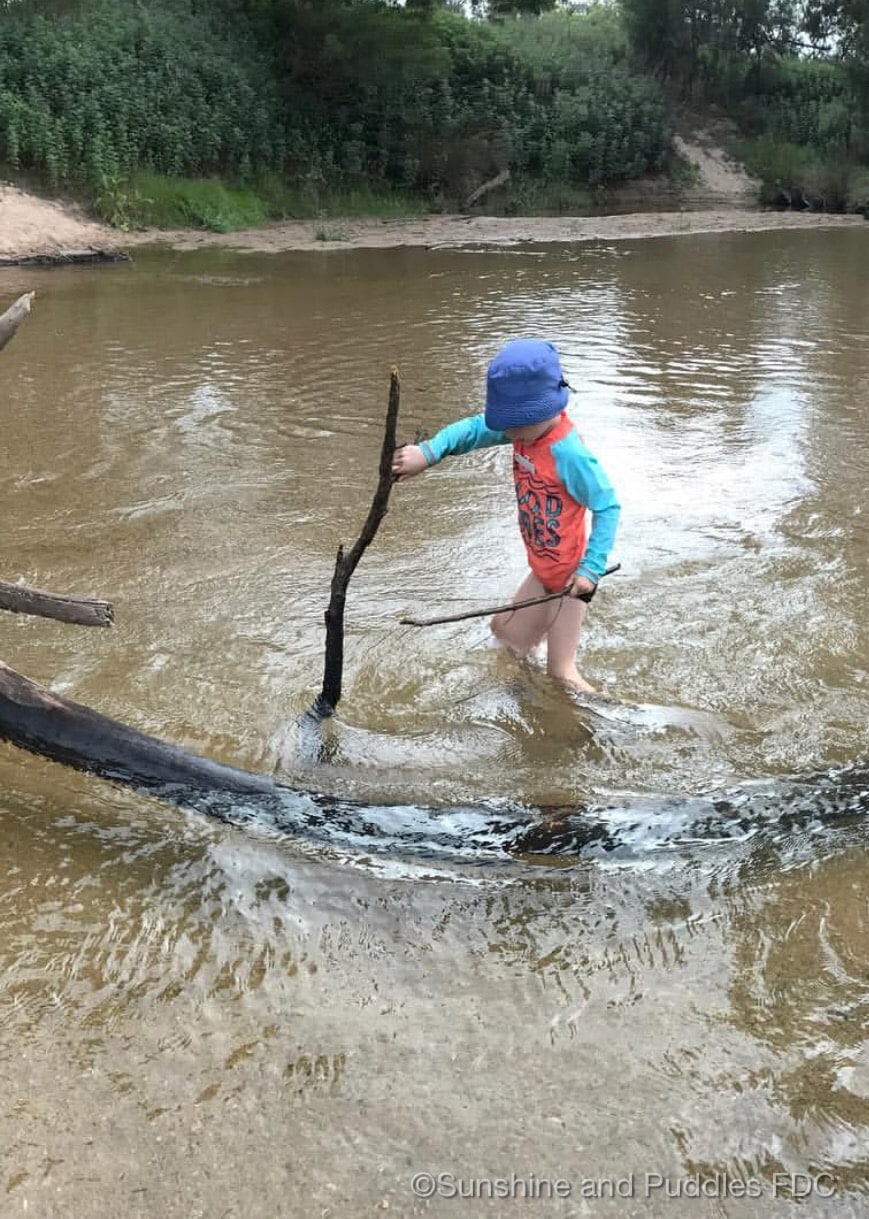
Photo Source – Sunshine & Puddles FDC
What do we do with Dirt? How can playing with it help us to learn?
So many questions a child will ask themselves, thus becoming active learners either on their own or as a group or led by myself as an educator at the appropriate time.
- We crush coloured clods of dirt to make paint and draw in the dirt/sand.
- Where did the dirt come from?
- What made the colours?
- Where are the best places to find the colours we want?
- Will it impact on the environment if I take some?
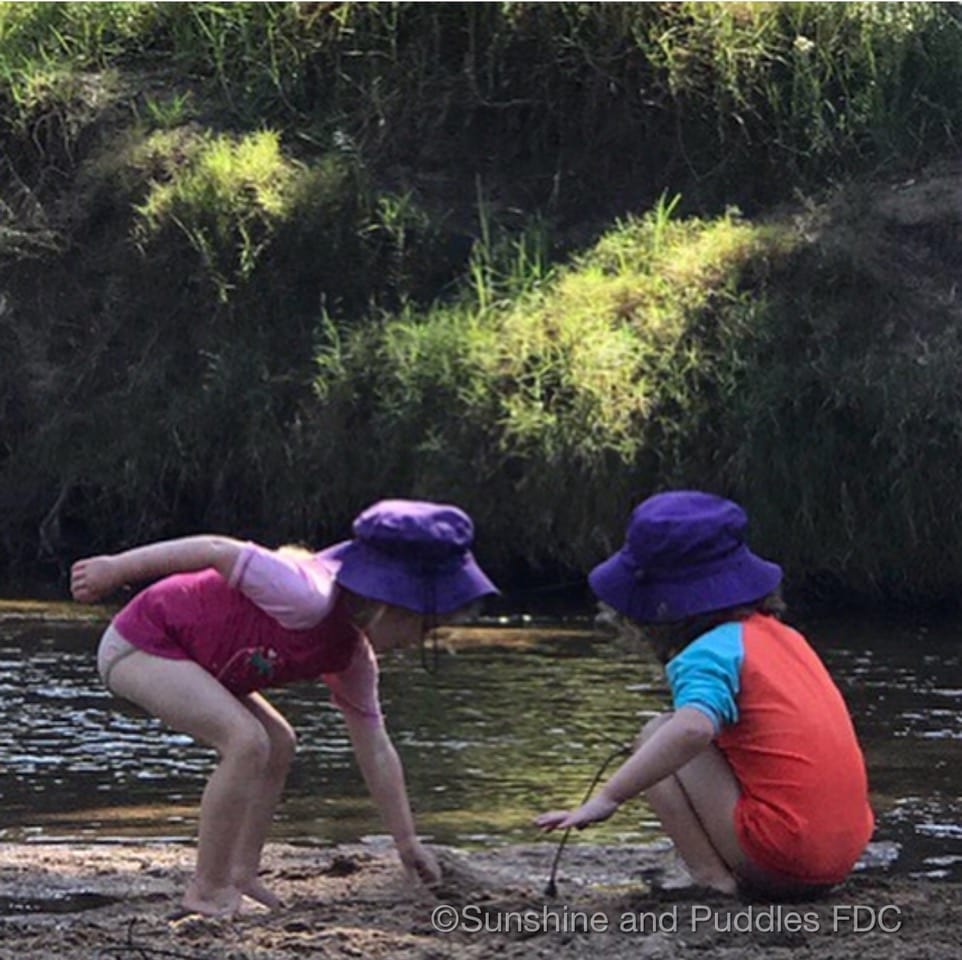
Photo Source – Sunshine & Puddles FDC
But what are we really learning with all this nature play?
- We learn to be scientists and detectives.
- We are learning to challenge our emerging skills and take risks.
- We learn that it's ok to play on our own and with friends.
- We learn to only take what the environment can afford to give us.
- We begin to understand that sometimes it's not appropriate to take from the environment
- The children quickly learn that it's ok to be disappointed and other times it's ok to take what they need. Both variables are acceptable and part of real life.
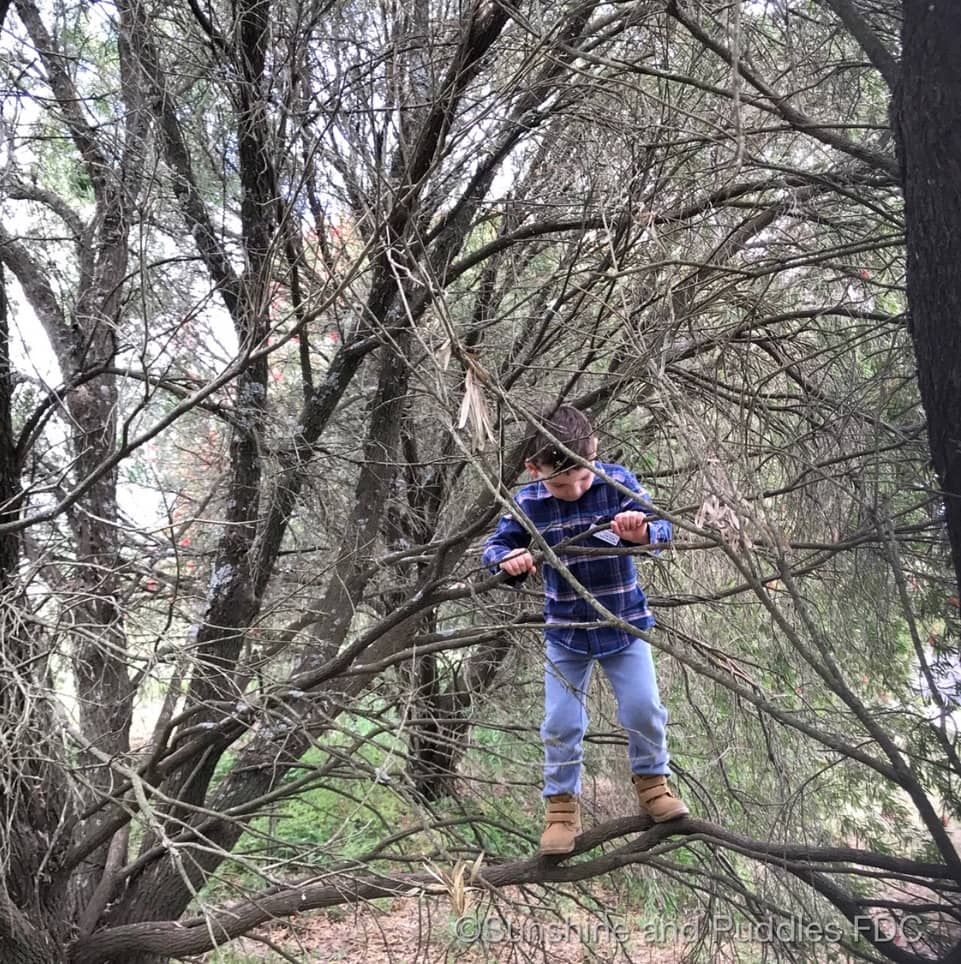
Photo Source – Sunshine & Puddles FDC

“Sometimes it's even ok to be bored and have nothing to do!.”
- Linda Tandy....Educator
Sometimes it's even ok to be bored and have nothing to do. Some of the best experiences the children have had at the river have come from being allowed to be bored! Pirate ships have been built and friendships born from those moments of simply sitting and wondering what's next.
Letting the children find their own play/work is so important. We can’t begin to know what they are thinking. We can guess yes but then we start to adultify their play. Our perspective can change where play goes or can stop it completely. I tend to stand back and watch what they do. As long as I can see them they are left be. I’m there if needed. They touch base then head off again.
Letting the children find their pace and their own interests is what nature-based care is about to me.
It’s the possibilities led by the child to the experience and I wouldn't have it any other way! What about you?

“Will it impact on the environment if I take some?.”
-Linda Tandy.....Educator
If you are feeling inspired and would like to explore more ideas from educators to help you incorporate nature into play click here to visit the post.
You can also find albums of ideas and inspiration in our Empowered Ed Community on Facebook. We'd love to welcome you into our community - It's free to join!
More About our Guest Writer.....

Linda is proud to be a nature based educator and has been working in Family Day Care for around 15 years. She has dedicated the last five years to providing a quality Nature Based Early Learning Service. Linda enjoys creating environments and experiences that offer authentic opportunities to young children so they can drive their own learning in a way that is natural to them. Linda's early learning service is registered with Inspired Family Day Care.

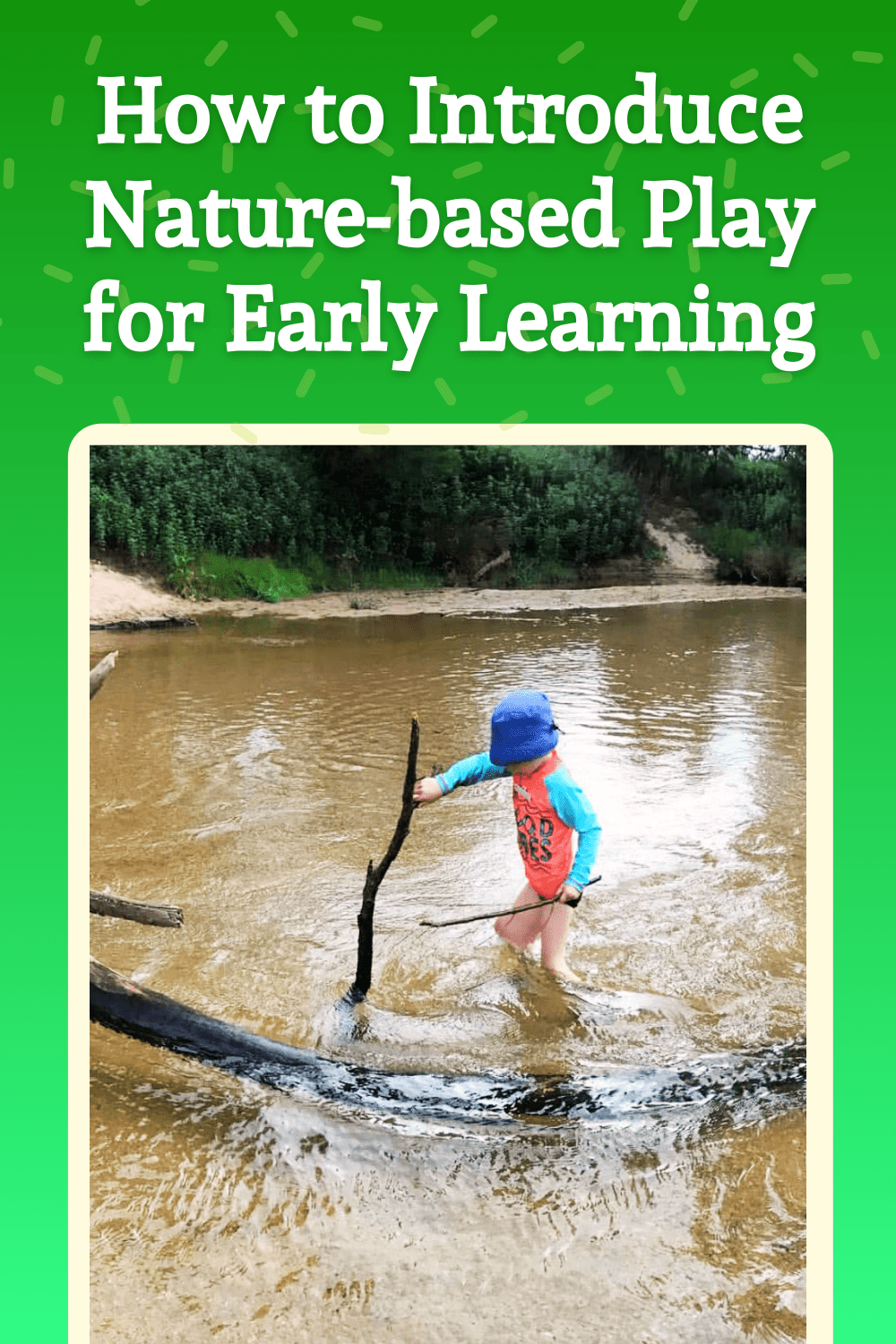
What a fantastic article, am an Educator based in the Eastern suburbs of Melbourne and also a grandmother. Have always loved nature play, I have always collected natural things which I bring into my workplace. The children just soak it up and their imaginative play is so wonderful to observe. My grandson has a growing stick collection, depending on the day they are drills, Jack hammers, saws, or used to build little houses for small creatures or dinosaurs.
Linda is a wonderful customer of ours who shares our ethos. We also make eco toys but nature’s gifts are the ultimate sensory items and can be many different items for a child’s imagination . Linda has so much knowledge to share.
She certainly does have so much to share Melissa, lucky children who get to play and learn in her nature based environment, thankyou for sharing your thoughts 🙂